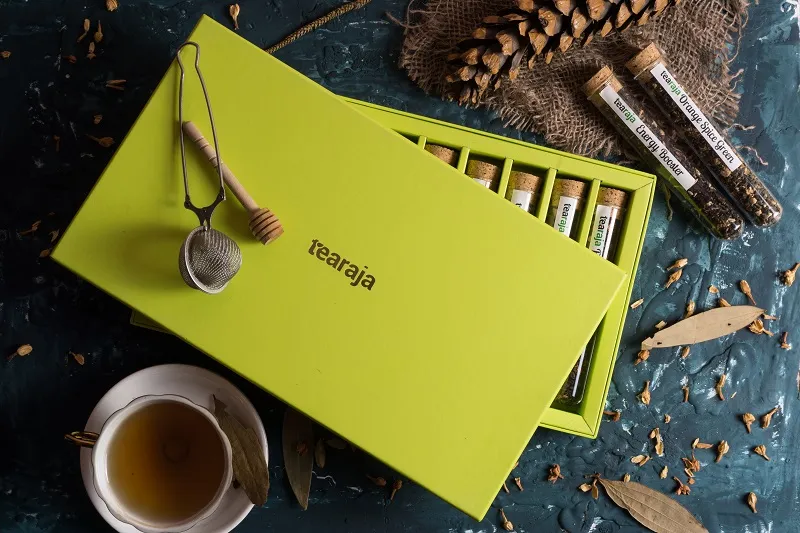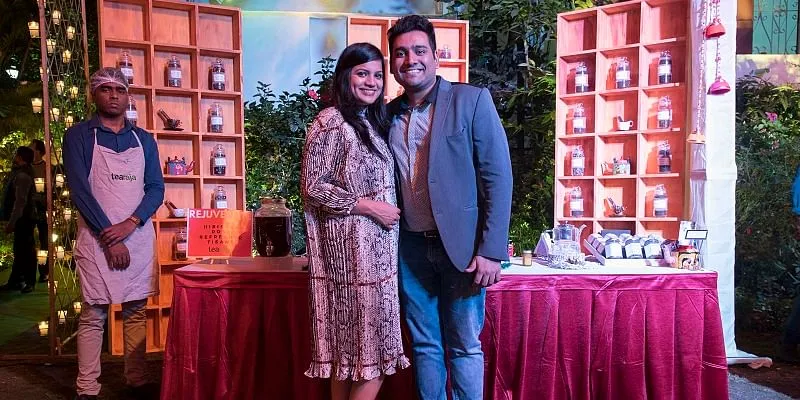From 10 orders to 10k customers, how Tearaja became a business with Rs 1.2 Cr revenue
Kolkata-based Tearaja started its journey with 10 online orders, and now serves more than 10,000 customers. The tea brand is targeting Rs 1.8 crore revenue in FY 2020-21.
“Adversity is the mother of all inventions,” says Manish Jain, Founder of Kolkata-based tea business . Manish, 32, also a member of the Indian Billiards and Snooker teams, had taken some time off from the game in 2014. There were no tournaments for the next five months and he decided to have a look at the family tea business.
This revealed two truths about his father’s company — it was bankrupt with a huge debt and interest payments, and there was no growth in sales for almost a decade.
Manish decided to take up the responsibility to revive his family business. And how! Today, Tearaja manufactures tea and sells more than 200 varieties, both online and offline, doubling its customer base year-on-year.

Source: Tearaja
Zero to one
Originally from Assam, Manish’s father moved to Kolkata with his family when terrorism peaked in the state. Initially starting a hardware business, he soon set up a 150 sq ft tea store in Kolkata’s Lal Bazar in 1994. It sold loose leaf teas, and multiple branded teas, including Tetley and Lipton.
However, after finding out about the debt and interests, Manish says, “Our life was upside down. We mortgaged our house and shop and everything had to be sold off to pay the vendors.”
He quit his job at the Railway Sports Promotion Board and started working on building the brand full-time. “The family business was not growing due to lack of innovation and invention,” he tells SMB Story.
In 2016, Manish incorporated Tearaja, bootstrapping it with a loan of Rs 10 lakh from his in-laws. He remembers being the first tea seller on Amazon from Kolkata, and says, “Starting with 10 orders a month, we now clock 4,000 online orders a month.”
Manish’s wife, Poonam Jain, 32, joined the founding team and serves as the design thinker, innovation, and new ideas creator.

Manish and Poonam Jain, Founders of Tearaja | Source: Tearaja
“We started the company in Kolkata since it is situated between Darjeeling and Assam and is the perfect strategic location for us to be in business,” he adds.
Tearaja started with single estate teas at first and has now ventured into flavoured and ayurvedic varieties as well. It has a team of 20 employees responsible for tea tasting, quality check, and packaging, and it outsources its tech and marketing teams.
Sourced from the best
Tearaja sources its tea directly from partnered tea estates, removing all middlemen, which has helped it reduce the time taken to source from various channels. “The tea comes directly to our warehouse in Kolkata, where it is blended, packed, and shipped to customers worldwide,” Manish adds.
The catalogue includes black tea, Darjeeling tea, oolong tea, white tea, green tea, herbal tea, ayurvedic tea, immunity tea, and iced tea. Prices start at Rs 299 for 100 grams and can go up to Rs 40,000 per kilo.
“Our target audience is quite niche. We are not in the mass segment and want to add value to the lives of our customers,” Manish explains, “Owing to the quality of our teas, our customers are our marketers.”
Tearaja has served more than 10,000 customers so far, and also focuses on corporate gifting. Its revenue has grown 1.5X to 2X year-on-year at zero percent burn rate.
The company claims to have generated Rs 83 lakh revenue in FY 2018-19, recording Rs 4 lakh profit. In FY20, Tearaja’s revenue stood at Rs 1.2 crore, with Rs 6 lakh profit.
“For FY 2020-21, we are targeting sales of Rs 1.8 crore,” Manish says.

Grandma's Kadha Chai by Tearaja | Source: Tearaja
Road ahead
Looking back, Manish says that the biggest challenge he faced was finding the right product-market fit. He believes that being open to customer feedback has helped him create the brand that Tearaja is today.
“Looking at market dynamics and online trends, customer behaviour and buying will keep changing from time to time and as an entrepreneur, I need to keep evolving,” he says.
Expert Market Research states that India consumed 1.10 million tonnes of tea last year and that the market is projected to grow at a CAGR of 4.2 percent between 2020 and 2025. It further adds that by 2025, the tea market in India is expected to attain 1.40 million tonnes.
Players like Teabox and Vahdam Teas have been creating a buzz in the Indian market.
However, Manish says, “We all have our own clients and our offerings are different. We are making our own proprietary blends and products.”
Going ahead, Tearaja plans to further expand its catalogue, expands and experiment in untouched markets.
“We plan to expand our brand to the Tier-III and IV cities of India in the next financial year,” adds the founder.
Tearaja also plans to raise its first round of funding in the next six to nine months.
Edited by Saheli Sen Gupta



![[Startup Bharat] Guwahati-based Aromica Tea promotes wellness through organic and herbal tea blends](https://images.yourstory.com/cs/2/b094ec506da611eab285b7ee8106293d/imageonline-co-logoadded12-1602602158150.jpg?fm=png&auto=format&h=100&w=100&crop=entropy&fit=crop)






